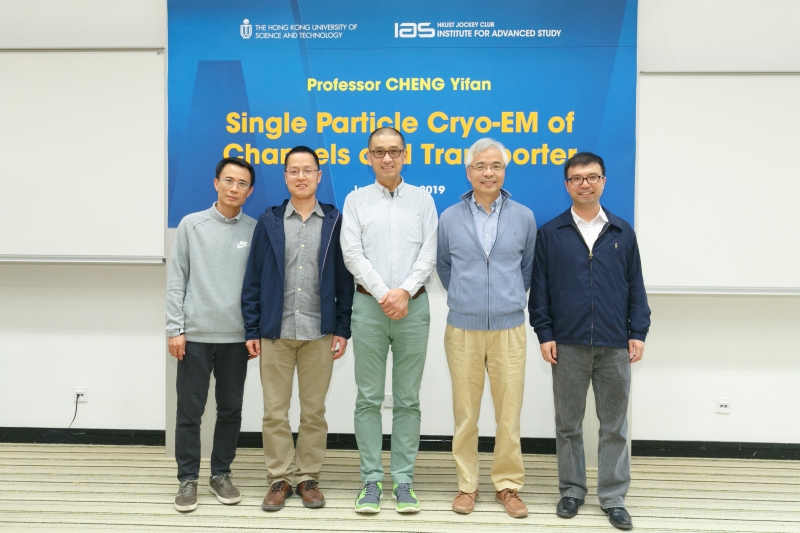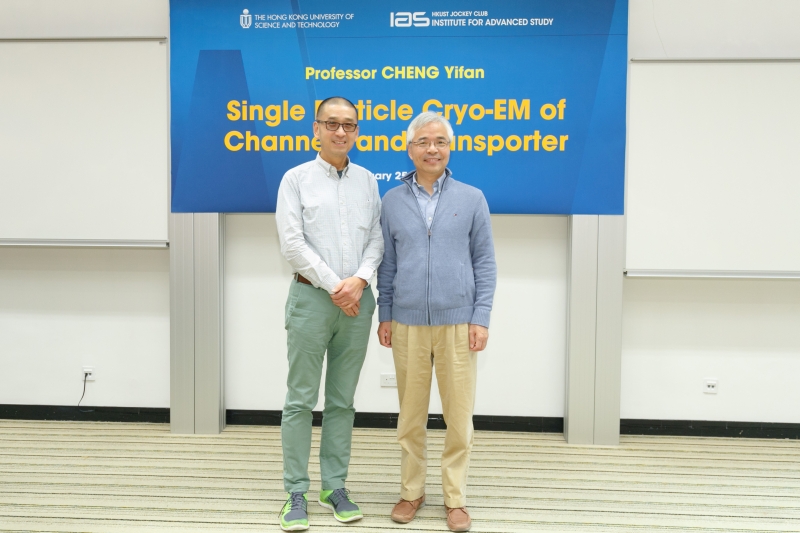Single Particle Cryo-EM of Channels and Transporter
Abstract
In the last few years, major technological advancements, particularly the development of new direct electron detection cameras and associated technologies, have enabled single particle electron cryo-microscopy (cryo-EM) to become the technique of choice for high-resolution structure determination of many challenging biological macromolecules. The speaker’s research team pioneered some of these technologies, and applied them to determine atomic structures of a number of integral membrane proteins, such as some major members of transient receptor potential (TRP) channel superfamily. Some of the team’s studies paved the way of applying this method to a wide range of integral membrane proteins. Nowadays, atomic structures of membrane proteins that are refractory to crystallization are being determined by this method in a rapid pace.
Technologically, the speaker’s research team further aimed to enable high-resolution structural studies of membrane proteins in near native lipid bilayer environment. To this end, the team pioneered a number of approaches, including reconstituting membrane protein into lipid nanodisc or into saposin based lipid nanoparticles, and developed methodology of using conformational specific monoclonal Fab or other designed scaffoldings to facilitate image alignment of very small integral membrane proteins reconstituted into lipid nanoparticles. In this presentation, the speaker will discuss two recent studies of his laboratory in which his team applied state-of-the-art single particle cryo-EM technologies in studies of TRPM4, a cation TRP channel that is calcium activated but impermeable to calcium ions, and Patched, a transporter that plays key roles in the hedgehog signaling pathway.
About the speaker
Prof. Yifan Cheng obtained his PhD in Physics from the Institute of Physics at the Chinese Academy of Sciences (CAS) in 1991. He continued his postdoctoral research as a NTNF Research Fellow at the University of Oslo (1991-1993), a Postdoctoral Fellow at the Institute of Physics of CAS (1993-1994) and an Alexander von Humboldt Fellow at the Max Planck Institute for Metals Research (1994-1996). In 1996, he changed his research field to structural biology and received further training in cryo-EM at Florida State University, Kyoto University and Harvard Medical School. In 2006, he joined the Department of Biochemistry and Biophysics at the University of California, San Francisco as an Assistant Professor and is currently a Professor there. He has also been an Investigator of the Howard Hughes Medical Institute since 2015.
Prof. Cheng’s laboratory specializes in cryo-EM and is interested in both methodologies and applications of this versatile technology to study structures and functions of various biological macromolecules. Of particular interests to him and his research team are studying integral membrane proteins and large dynamic macromolecular machineries, and developing enabling technologies to facilitate structural studies of these challenging macromolecules by cryo-EM. In 2013, his lab developed an algorithm to correct for motion-induced blurring in images, allowing users to take full advantage of sensitive new electron detectors and obtain high-resolution information from their samples. He is in the editorial boards of Microscopy (previously Journal of Electron Microscopy), Structure, and Journal of Structural Biology. He is also a Co-editor of the book "Electron Crystallography of Soluble and Membrane Proteins : Methods and Protocols".
Prof. Cheng was awarded the K. H. Kuo Award for Distinguished Scientist by K. H. Kuo Education Fund in 2014 and the Christian B. Anfinsen Award by The Protein Society in 2018. He is the member of the Microscopy Society of America, the American Chemical Society, the Biophysical Society, the American Heart Association and the American Society for Cell Biology.




